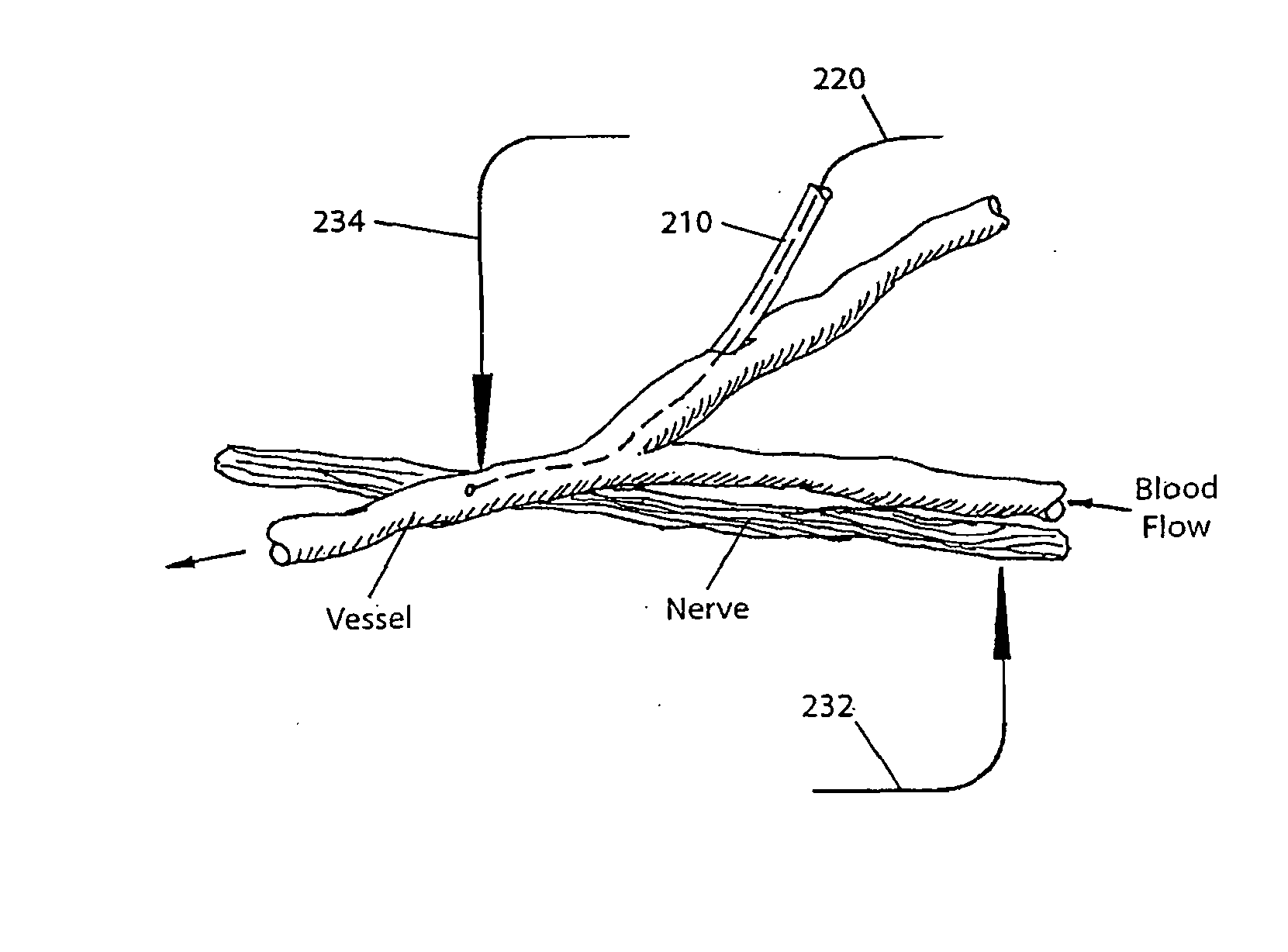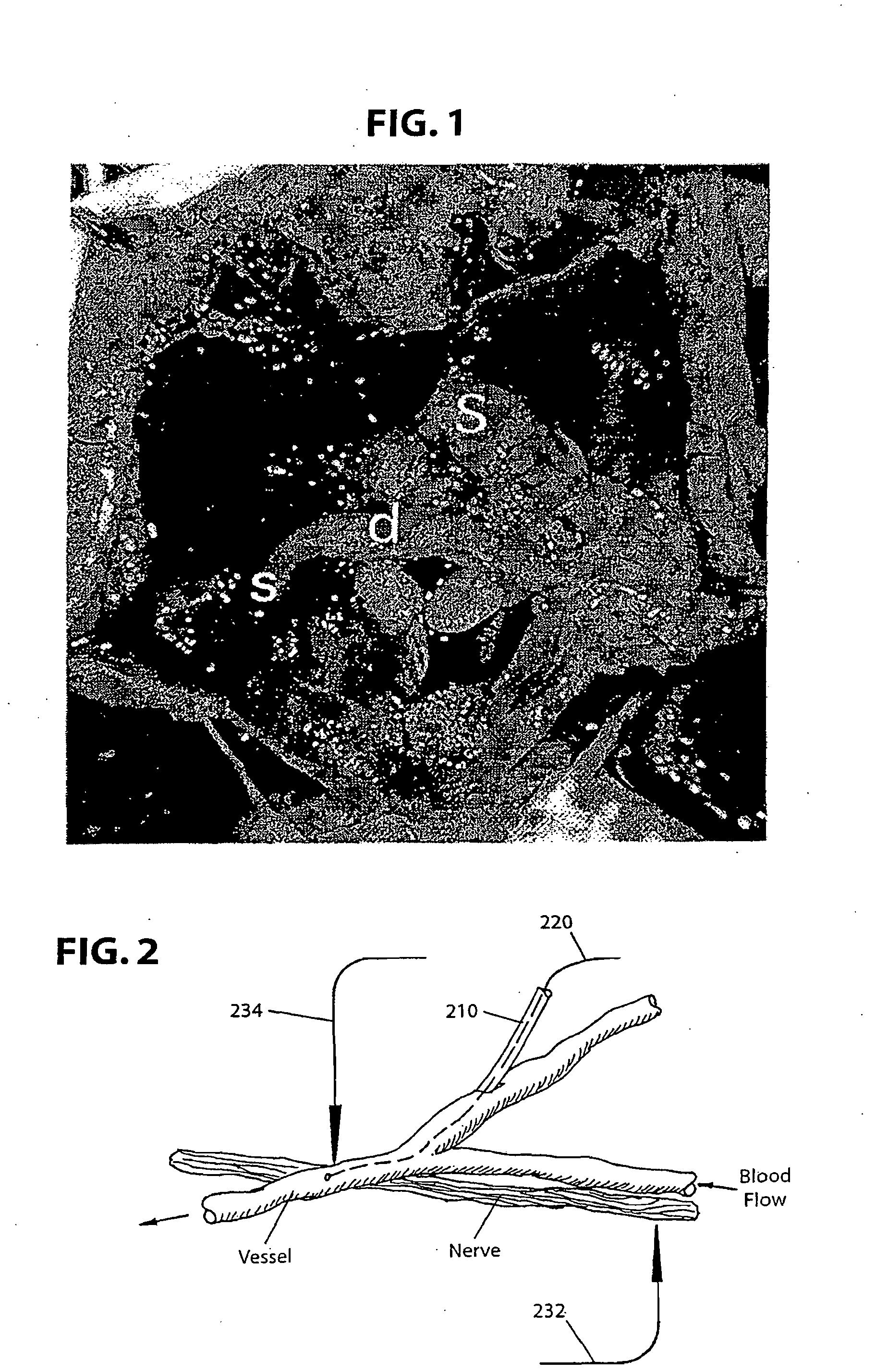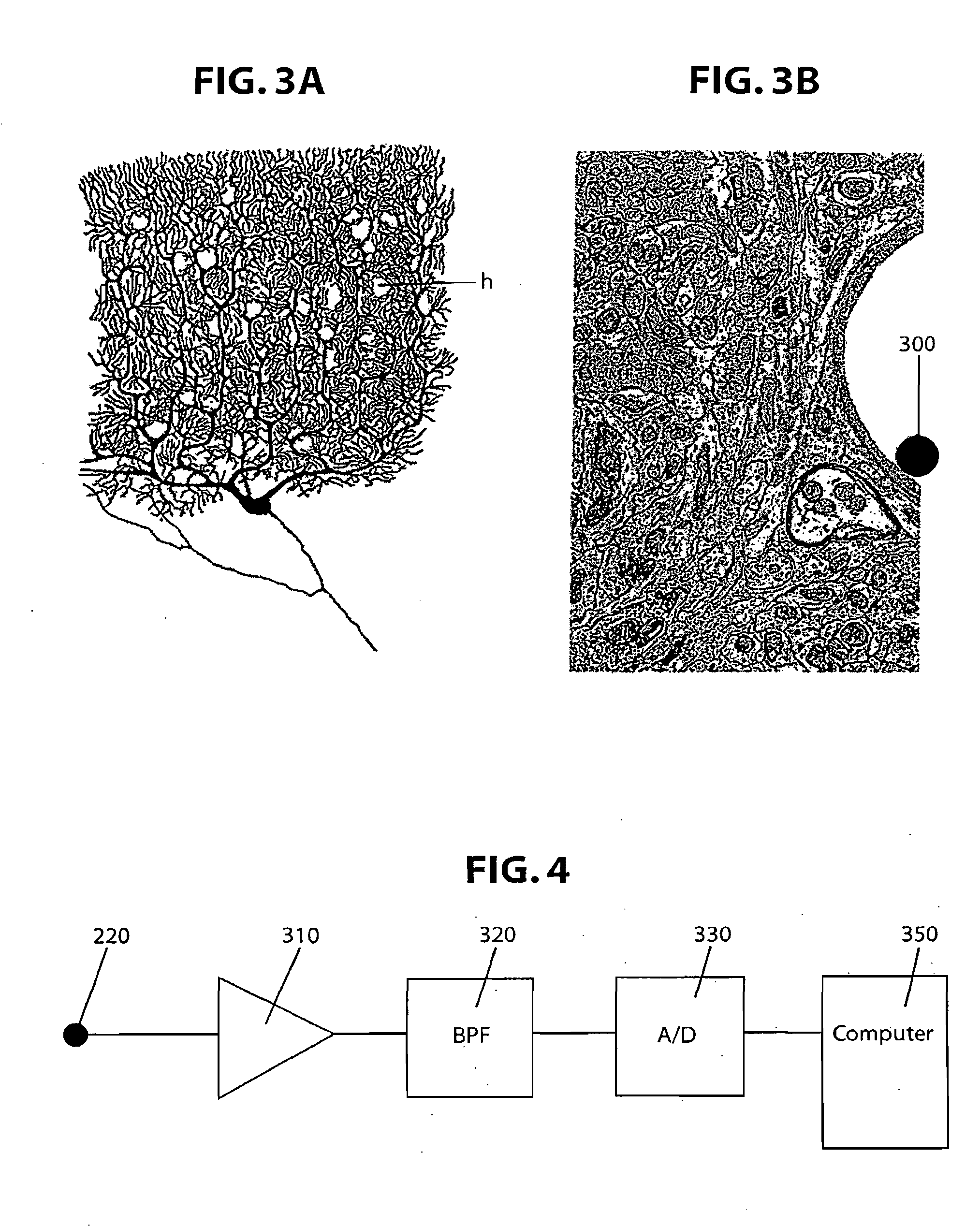Brain- machine interface systems and methods
a technology of brain-machine interface and system, applied in the field of brain-machine interface systems and methods, can solve the problems of limiting the interface of most modern devices to the human one, the brain-machine interface will likely become the major stumbling block to robust and rapid communication with such systems, and the development of brain-machine interfaces has not been as impressive, so as to achieve the effect of improving the quality of life and facilitating the adjustment of the position of stimulating electrodes
- Summary
- Abstract
- Description
- Claims
- Application Information
AI Technical Summary
Benefits of technology
Problems solved by technology
Method used
Image
Examples
Embodiment Construction
[0027] In an exemplary embodiment, the present invention relates to a neurovascular interface method and system which entails several aspects that will be described below, including: (a) the determination of optimal trans-vessel recording conditions; (b) techniques for introducing and guiding nano-electrodes (n-electrodes) within vessels; (c) techniques for fixing electrodes in position within vessels; (d) the acquisition of data to aid in the design of the n-electrodes; and (e) the determination of the optimal characteristics for recording electrodes, pre-amplifiers and amplifiers, signal processing and other ways of optimizing the recorded signals.
[0028] The optimal conditions for obtaining and holding a robust signal recorded across the vascular system and those factors that influence the robustness of the neurovascular approach will be disclosed.
[0029] In accordance with a first exemplary embodiment, trans-vascular activity from the enteric nervous system (ENS) is recorded. Fu...
PUM
 Login to View More
Login to View More Abstract
Description
Claims
Application Information
 Login to View More
Login to View More - R&D
- Intellectual Property
- Life Sciences
- Materials
- Tech Scout
- Unparalleled Data Quality
- Higher Quality Content
- 60% Fewer Hallucinations
Browse by: Latest US Patents, China's latest patents, Technical Efficacy Thesaurus, Application Domain, Technology Topic, Popular Technical Reports.
© 2025 PatSnap. All rights reserved.Legal|Privacy policy|Modern Slavery Act Transparency Statement|Sitemap|About US| Contact US: help@patsnap.com



